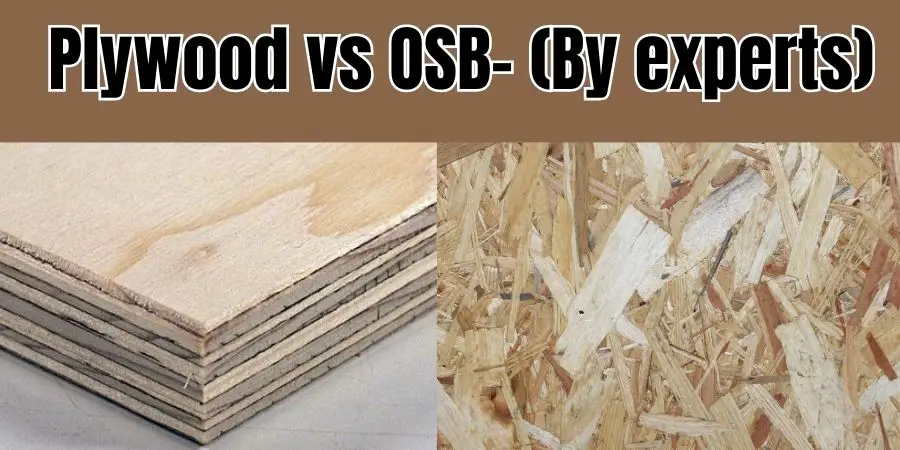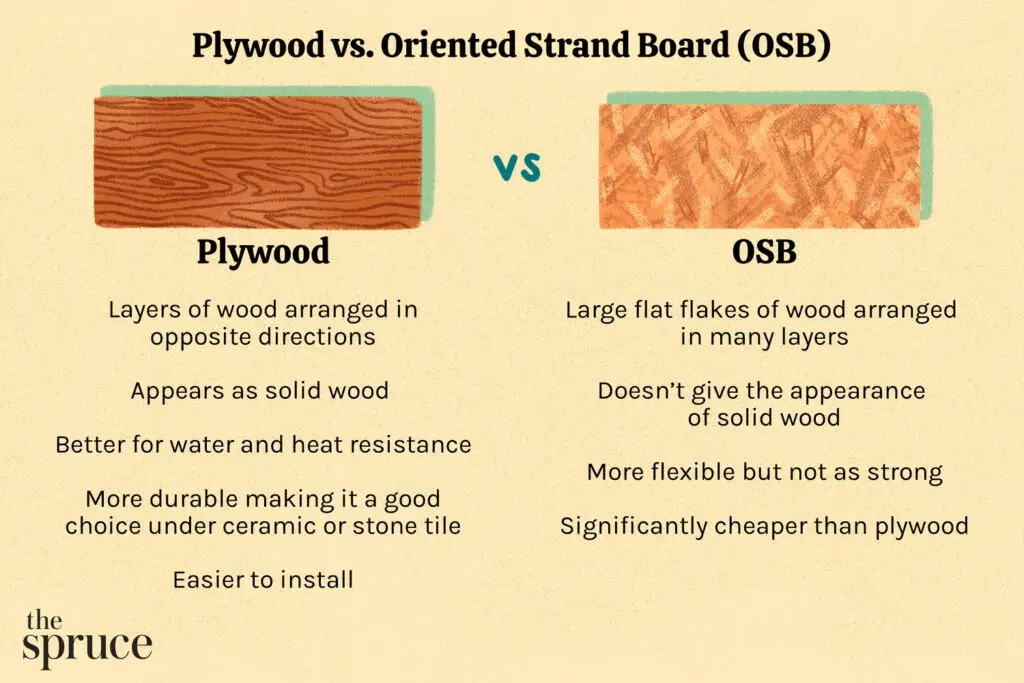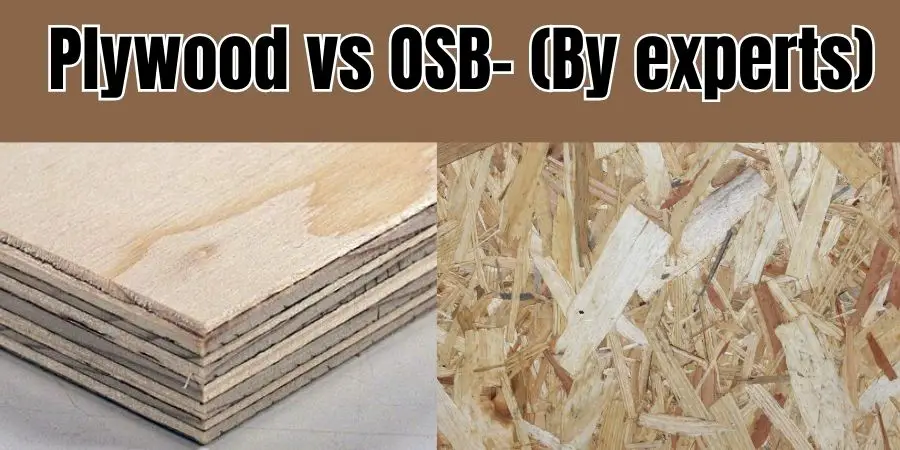So you’re trying to decide between using plywood or OSB for your building project? Let me give you the lowdown on the differences between the two.

About Plywood
Plywood is made by gluing thin layers of wood veneers together. It usually has a smooth and consistent surface with visible wood grain patterns, which many people find attractive. Plywood is also great for areas with moisture or humidity because it resists warping and damage.
About OSB
On the other hand, OSB is made by compressing and bonding strands of wood chips together with adhesive. It has a rougher texture and noticeable seams, which might not be as visually appealing as plywood. However, OSB is generally more affordable and can handle heavier loads without bending or breaking.
Plywood vs OSB (Oriented Strand Board)

If you need a material that is more moisture-resistant and visually appealing, plywood may be the better choice.
However, if you need a more affordable and durable material that can handle heavy loads, OSB may be the better option.
Plywood vs OSB- pros and cons
Plywood
Pros:
- Smooth and consistent surface with visible wood grain patterns, which is aesthetically pleasing.
- Good resistance to moisture and warping, making it suitable for use in humid or damp environments.
- Excellent strength-to-weight ratio, making it a good choice for applications where weight is a concern.
- Durable and long-lasting, making it a good investment.
Cons:
- More expensive than OSB.
- Can be prone to splitting along the veneers if not properly handled or installed.
OSB
Pros:
- More affordable than plywood.
- Higher bending strength, making it able to withstand heavier loads without breaking or bending.
- Made from smaller, fast-growing trees, making it a more sustainable choice.
- Can be used in a variety of applications, including sheathing and subflooring.
Cons:
- Rougher texture and less visually appealing than plywood.
- More susceptible to moisture damage and swelling, especially if exposed to water for an extended period.
- May not be suitable for decorative application
Choosing Between Plywood and OSB:
When it comes to choosing building materials for your project, you may be trying to decide between using plywood or OSB. Here are some factors to consider:
Appearance and Surface Quality
- Plywood: Smooth and consistent surface with visible wood grain patterns, which is aesthetically pleasing.
- OSB: Rougher texture and less visually appealing than plywood.
Strength and Durability
- Plywood: Excellent strength-to-weight ratio, good resistance to moisture and warping, making it a good choice for areas with high humidity or dampness. It’s also durable and long-lasting.
- OSB: Higher bending strength, making it able to withstand heavier loads without breaking or bending. However, it’s more susceptible to moisture damage and swelling, so it may not be the best choice for areas with high humidity or frequent exposure to water.
Uses and Applications
- Plywood: Commonly used for flooring, roofing, sheathing, furniture making, and decorative finishes.
- OSB: Often used for sheathing, subflooring, wall and roof panels, and furniture making.
Plywood vs OSB- Uses
The decision of whether to use plywood or OSB for a specific use depends on various factors. Here’s a breakdown of which material is better suited for which uses:
Plywood uses
Flooring: Plywood is a great choice for flooring because of its durability and resistance to moisture and warping. It’s also strong enough to withstand heavy foot traffic and can be sanded and refinished if needed.
Roofing: Plywood is often used for roof sheathing because of its strength and ability to support the weight of roofing materials. It’s also resistant to moisture and warping, which makes it a good choice for areas with high humidity or dampness.
Furniture making: Plywood is a great option for making furniture because of its smooth and consistent surface with visible wood grain patterns. It’s also easy to work with and can be cut into various shapes and sizes.
Decorative finishes: Plywood has an aesthetically pleasing appearance and can be stained or painted to match any décor.
OSB uses
- Sheathing: OSB is a popular choice for sheathing because of its strength and affordability. It can handle heavy loads without bending or breaking, making it a great choice for walls, roofs, and floors.
- Subflooring: OSB is often used as subflooring material because of its strength and ability to withstand heavy foot traffic. It’s also affordable and widely available.
- Wall and roof panels: OSB is commonly used for wall and roof panels because of its strength and affordability. It’s also easier to install than plywood due to its larger sheet sizes.
- Furniture making: OSB can be used to make furniture, but it’s not as visually appealing as plywood and is better suited for industrial or utilitarian designs.
Conclusion: Should i choose Plywood or OSB
The choice between plywood and OSB depends on your specific needs and the requirements of your project. Here are some factors to consider when deciding which to choose:
Budget: OSB is generally more affordable than plywood, so if cost is a primary consideration, OSB may be the better choice.
Moisture resistance: Plywood is generally more resistant to moisture and warping than OSB, so if you’re working on a project that will be exposed to water or high humidity, plywood may be the better choice.
Aesthetics: Plywood has an aesthetically pleasing appearance with visible wood grain patterns, which makes it a good choice for projects where appearance matters.
Strength and durability: Both plywood and OSB are strong and durable, but OSB is more commonly used for projects that require heavy-duty support and load-bearing capacity.





